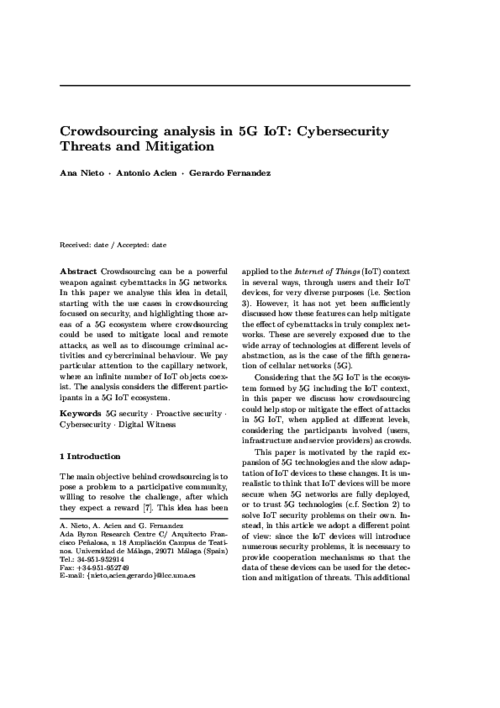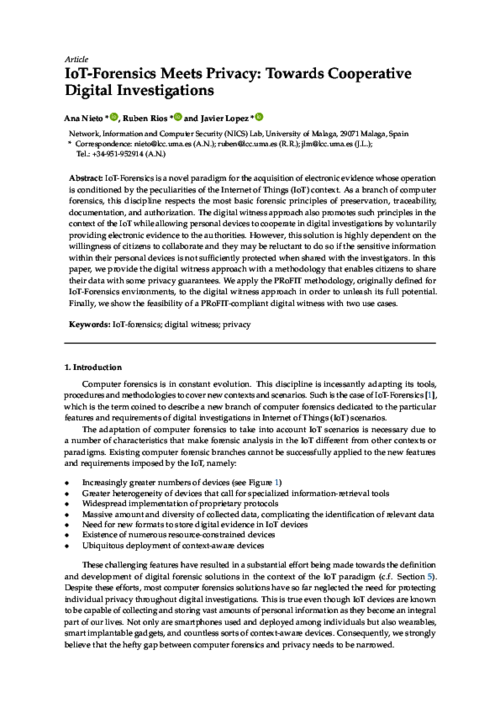Mobile Networks and Applications (MONET), Springer US, pp. 881-889, 10/2018. DOI
Abstract
Crowdsourcing can be a powerful weapon against cyberattacks in 5G networks. In this paper we analyse this idea in detail, starting from the use cases in crowdsourcing focused on security, and highlighting those areas of a 5G ecosystem where crowdsourcing could be used to mitigate local and remote attacks, as well as to discourage criminal activities and cybercriminal behaviour. We pay particular attention to the capillary network, where an infinite number of IoT objects coexist. The analysis is made considering the different participants in a 5G IoT ecosystem.

Sensors, vol. 18, issue 2, no. 492, MDPI, 02/2018. DOI
Abstract
IoT-Forensics is a novel paradigm for the acquisition of electronic evidence whose operation is conditioned by the peculiarities of the Internet of Things (IoT) context. As a branch of computer forensics, this discipline respects the most basic forensic principles of preservation, traceability, documentation, and authorization. The digital witness approach also promotes such principles in the context of the IoT while allowing personal devices to cooperate in digital investigations by voluntarily providing electronic evidence to the authorities. However, this solution is highly dependent on the willingness of citizens to collaborate and they may be reluctant to do so if the sensitive information within their personal devices is not sufficiently protected when shared with the investigators. In this paper, we provide the digital witness approach with a methodology that enables citizens to share their data with some privacy guarantees. We apply the PRoFIT methodology, originally defined for IoT-Forensics environments, to the digital witness approach in order to unleash its full potential. Finally, we show the feasibility of a PRoFIT-compliant digital witness with two use cases.

 ]
]